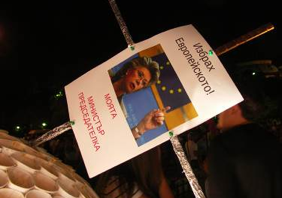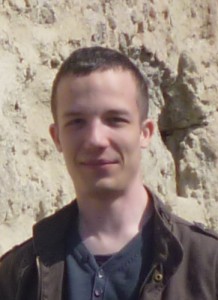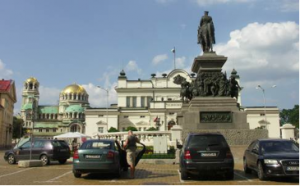Since mid-June, public spaces of downtown Sofia have been constantly in use by protesters against the current Bulgarian government. In this short paper, I offer a critical geographical reading of how these daily demonstrations have been orchestrated in the urban milieu, and how these performances strengthen, or in some cases weaken political and economic claims of the protesters (although the demands become quite elucidative if we look at them from the global context of post-socialist neoliberalism). The ideas outlined here stem from the Summer School ‘Between (post)Socialism and (neo)Liberalism’ in which we had the opportunity both to discuss current happenings with informed local leftists of New Left Perspectives and Social Centre Xaspel, and visit the demonstrations themselves. Thus, it does not aim at providing a full political-economic reading of the current demonstrations, as these questions have already been discussed elsewhere. Instead, I argue that a critical geographic understanding offers new insights into the Sofia protests these weeks.
How urban spaces are performed and how urban architecture serves certain ways of performing the city during marches have been one of the questions critical urban geography and critical urban studies in general have dealt with in the past decades. Most of the studies have focused on how the re-arrangement of urban spaces architecturally served nation-building on festivities and marches. Joshua Hagen and Robert Ostergren (2006) for example looked at how the Nazi Party Rally Grounds in Nuremberg was established to strengthen national identity during the grandiose festivities, and how the inner-city was refurbished to establish historical continuity of the medieval and the Third Reich. Another article of Joshua Hagen (2010, 418) on Munich underlines that urban reframing often fails to serve the ideology of events; at the Königsplatz in Munich ‘[t]he result was a space that lacked the symbolic coherence, spatial focus, and practical functionality desired by Nazi leaders’. These papers build on non-representational and performativity theory, and help to understand current Sofia protests in a sense that they call attention to the (mis)match of public events and urban architecture. What they mostly miss nevertheless, is the political economy of the happenings, which is crucial in the understanding of the Sofia protests, as outlined in a recent article on this website. Consequently, other geographers deciphered how capitalism, urban landscape and ideology go hand-in-hand with each other. The classic study of David Harvey on the Paris commune (for a recent summary see Harvey 2006), his re-reading of the Haussmannization of Paris (how it is a manifestation of the new urban political economy), or Atkinson and Cosgrove’s (1998) account on the Vittorio Emanuele II monument in Rome bringing together memory, nation and modernization both emphasize a Marxist understanding of the urban milieu. These writings also offer tools for understanding the Sofia demonstrations of the past weeks.
The urban context of the afternoon marches of the summer protests in Sofia is in tension with the political agenda of the protesters being anti-communist (anti-Soviet or anti-Russian), anti-oligarchy, for-market and EU-friendly. This tension is not a unique phenomenon, it might be typical at each and every strike or protest, and it is partly the result of diverse demands of different social classes on the street, and partly that of the hardly unalterable city structure during demonstrations. The marches in Sofia follow the Tsar Osvoboditel (Tsar Liberator) Boulevard (a large inner-city avenue suitable for such happenings) which commemorates Tsar Alexander II of Russia who played an important role in the liberation of Bulgaria at the end of the 19th century. The route crosses Narodno Sabranie Square in front of the Parliament which acts as a focal point of the demonstrations. In the centre of the square an equestrian monument of Tsar Liberator faces the building of the Parliament (see photo below). In this monument today, Russian and Bulgarian soldiers led by the Greek goddess Nike all call for ‘Оставка’ (Resign) in this cleverly (re-)framed international movement.
The whole urban architecture of the square represents the multi-layered urban landscape and its complicated political economy quite impressively (see photo below). Around the monument, the protesters’ tents seemingly resemble the anti-capitalist Occupy Movement’s reclaiming of public space (although the tents have a slightly different meaning in the pro-market, pro-capitalist Sofia context). The urban stage of surrounding buildings illustrates how global capitalism penetrated the Bulgarian economy under post-socialism: advertisements of international companies (MetLife, mobile phone operators in Norwegian and Austrian hands, the Greek affiliate Alpha Bank) and the building of Radisson Blue Hotel dominate the view, showing contradictions of neoliberal capitalism in Eastern Europe, mostly not referred to by the protesters (or only in the case of Russian capital).
Anti-Russian claims at the demonstrations (e.g. ‘Russians to Siberia’ and ‘Russians out from Bulgaria’ banners) find a visually powerful setting on the route in front of the grandiose Monument of the Soviet Army (see photo below). Here, critique of the inflow of Russian capital under post-socialism meets memories of Soviet dominance (the banner reads ‘Liberty or Soviet Union’) and results in a complicated (but quite acute and seemingly consistent) framing of current political-economic conditions in Bulgaria. In fact, how these protesters use the physical milieu is different from the famous repainting of the monument’s figures into American comics characters which called for a critique of current neoliberal consumer culture. (The consumer culture of the protests is also exemplified by street vendors selling national and EU flags, whistles, etc. for passers-by.) The Tsar Osvoboditel boulevard (and on some days the protest as well) ends up at Orlov most (Eagles’ bridge), a focal landmark of the winter protests in Sofia. It is at this place where demands of demonstrators are extended to the national (and thanks to Bulgarian emigrants, to global) space: the asphalt features the names of cities supporting the Sofia protests.
Relations to capital and desires of capitalism among protesters are performed in front of the Parliament during the daily morning protest ‘coffee to go away’ (see photo below).
Here, framed under a Starbucks-styled logo reading ‘Drink coffee! Fight oligarchy!’ people embrace the middle-class consumer culture before their working time starts (many of the protesters are reported to be employed – but not well-paid – people). Empty cups with messages to politicians in power are re-used for making small installations representing political messages of the protesters (such as EU commissioner Viviane Reding, ‘my prime minister’ fastened to a silver-coloured cross stiched into the coffee cups – see photo below). The coffee drinking action illustrates the very desires of protesters for a ‘Western normalcy’ in their lives which is in sharp contrast with their present experience of post-socialist insecurity, precariousness and ‘cleptocracy’. The vocabulary of the protesters is a meaningful consequence of post-socialist political economies of Bulgaria: those people who march on the street are not the most impoverished people in the capital city, but they experienced rapid shifts in the coordinates of the social field in the past 20 years and demand a logical world-order which is not as unjust as it is today with growing inequalities in the society.
The urban setting of the protests is performed day-by-day in somewhat different ways. Apart from the Eagles’ bridge, afternoon marches often end up at the Sveti Aleksandar Nevski cathedral just behind the Parliament building (see photo below). As police cordons run around the two buildings and the square between them is closed off from the public, representative buildings of religion and state are stitched together by police fences.
I argued in this paper that the political protests in Sofia are orchestrated in the urban setting in somewhat controversial ways. The urban spaces in which the demonstrations take place show different and complex layers of Bulgarian history and the Bulgarian political economy. As a consequence, some political messages of the protesters are amplified by the materiality of the urban architecture, but other demands and ideologies are curtailed by the physical setting in which they are transmitted to the public. But the case of Sofia is not an exception. To cite David Harvey (1978) once again, it is just how capital(ism) works: the primary circuit of capital for creating surplus value (experienced by both employed and unemployed protesters in pervasive ways under post-socialism) meets the secondary circuit (fixed capital in the built environment of the city), and the tertiary circuit (falling social expenditures aiming at the reproduction of labour power) in present-day Sofia.
Acknowledgments
Many thanks for Ágnes Gagyi, Tamás Gerőcs and Zoltán Gyimesi for comments on an earlier version of this writing.
References
Atkinson, D., Cosgrove, D. (1998): Urban rhetoric and embodied identities: city, nation, and empire at the Vittorio Emanuele II monument in Rome, 1870–1945. Annals of the Association of American Geographers. 88(1). 28–49.
Hagen, J., Ostergren, R. (2006): Spectacle, architecture and place at the Nuremberg Party Rallies: projecting a Nazi vision of past, present and future. Cultural Geographies. 13(2). 157–181.
Hagen, J. (2010): Architecture, symbolism, and function: the Nazi Party’s ‘Forum of the Movement’. Environment and Planning D. 28(3). 397–424.
Harvey, D. (1978): The urban process under capitalism: a framework for analysis. International Journal of Urban and Regional Research. 2(1–4). 101–131.
Harvey, D. (2006): The political economy of public space. In: Low, S. M., Smith, N. (eds.): The politics of public space. London, Routledge, 17–34. Online: http://davidharvey.org/media/public.pdf
Photo credits
All photographs are by Márton Czirfusz.
Márton Czirfusz is an economic geographer based in Budapest. He is a member of the Public Sociology Working Group “Helyzet” and a research fellow of the Centre for Economic and Regional Studies, Hungarian Academy of Sciences.








